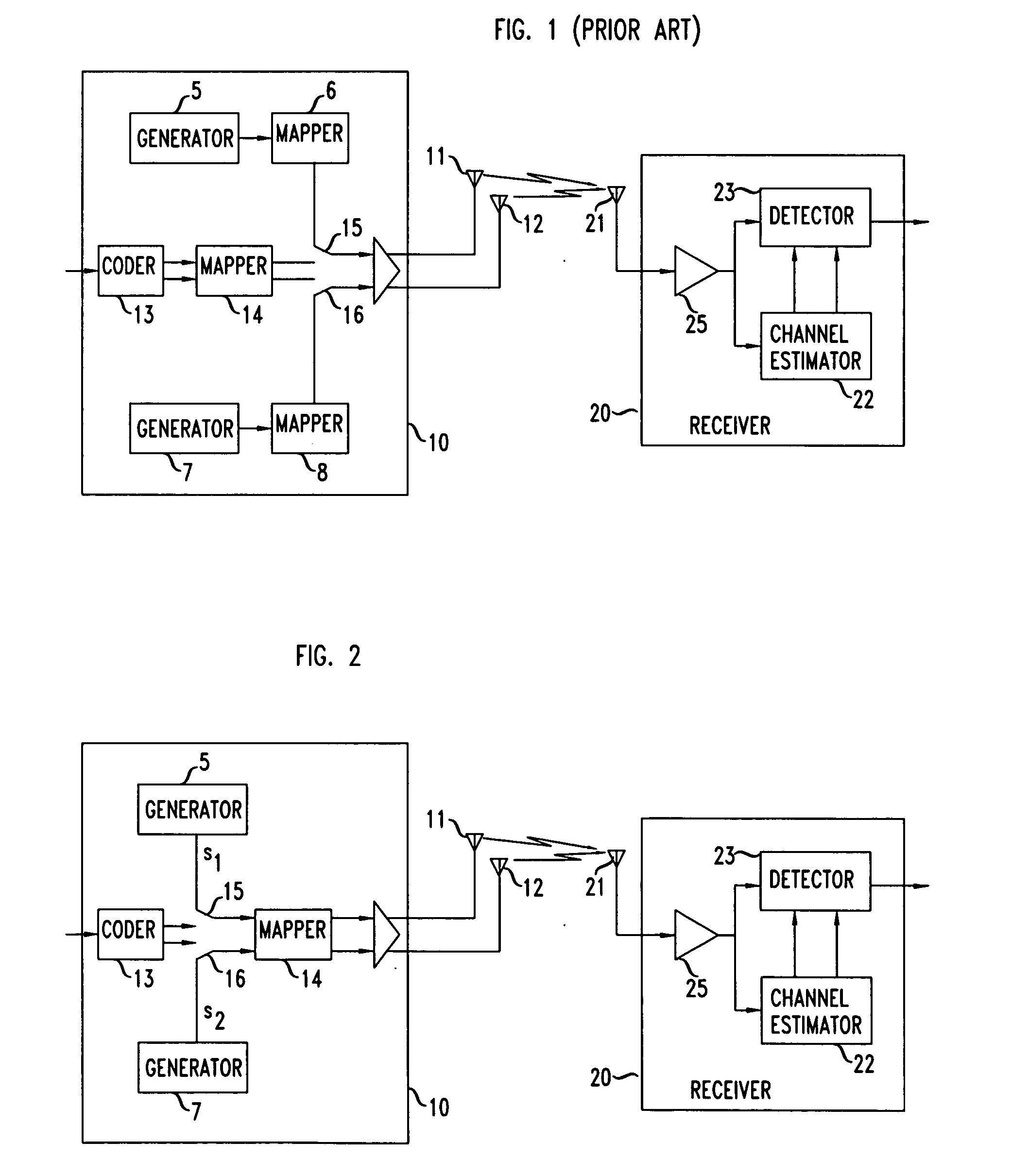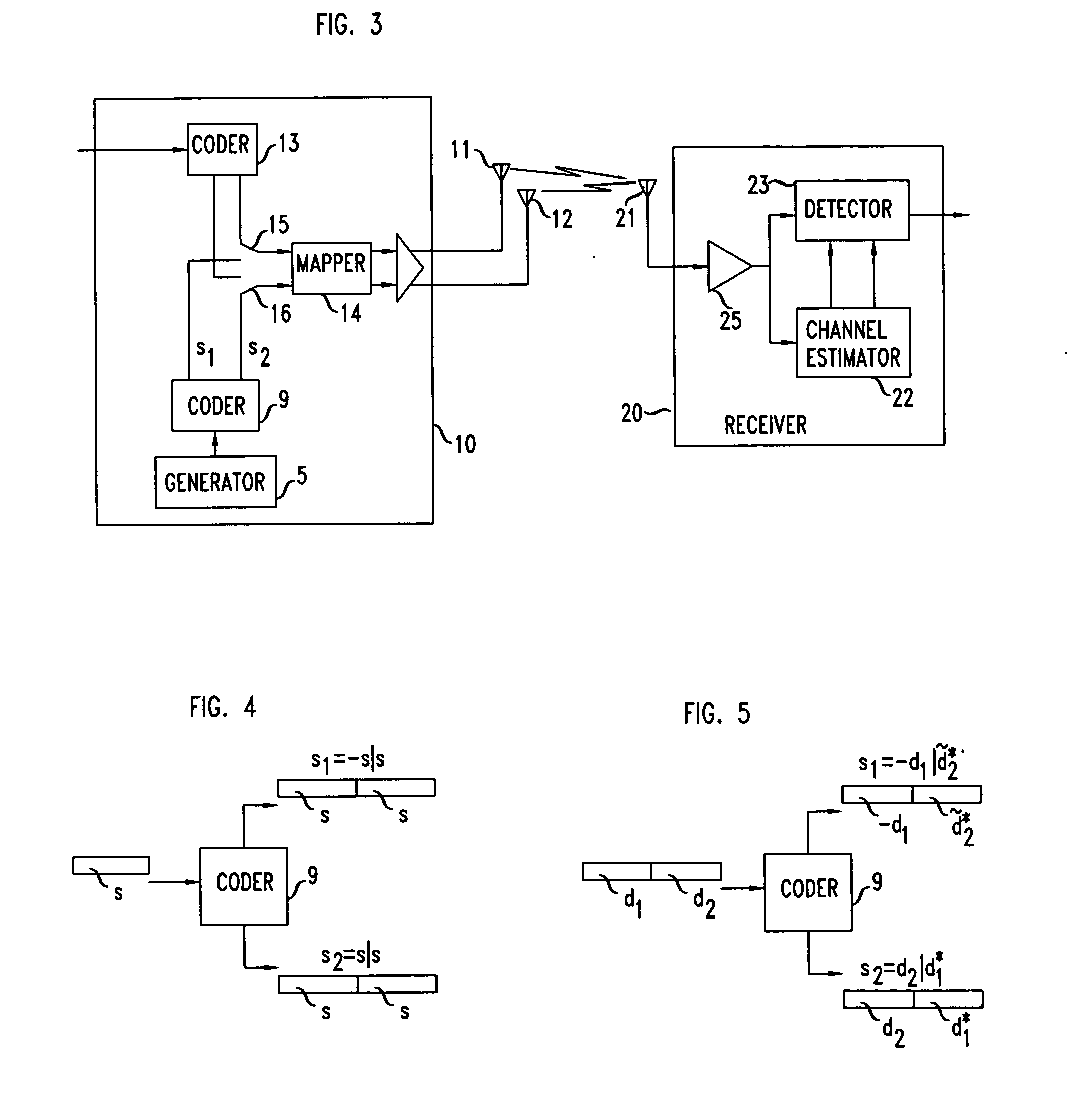Training-based channel estimation for multiple-antennas
a channel estimation and multiple-antenna technology, applied in the field of spacetime coding, can solve the problems of large space, computational prohibitive searches, and performance penalties relative to coherent techniques
- Summary
- Abstract
- Description
- Claims
- Application Information
AI Technical Summary
Benefits of technology
Problems solved by technology
Method used
Image
Examples
Embodiment Construction
[0019] The following mathematical development focuses on a system having two transmit antennas and one receive antenna. It should be understood, however, that a skilled artisan could easily extend this mathematical development to more than two transmit antennas, and to more than one receive antenna.
[0020]FIG. 2 shows an arrangement a transmitter with two transmit antennas 11 and 12 that transmits signals s1 and s2, respectively, and a receiver with receive antenna 21, and channels h1 (from antenna 11 to antenna 21) and h2 (from antenna 12 to antenna 21) therebetween. Channels h1 and h2 can be expressed as a finite impulse response (FIR) filter with L taps. Thus, the signal received at antenna 21 at time k, y(k), can be expressed as y(k)=∑i=0L-1h1(i)s1(k-i)+∑i=0L-1h2(i)s2(k-i)+z(k)(1)
where z(k) is noise, which is assumed to be AWGN (additive white Gaussian noise).
[0021] The inputs sequences s1 and s2 belong to a finite signals constellation and can be assumed, without l...
PUM
 Login to View More
Login to View More Abstract
Description
Claims
Application Information
 Login to View More
Login to View More - R&D
- Intellectual Property
- Life Sciences
- Materials
- Tech Scout
- Unparalleled Data Quality
- Higher Quality Content
- 60% Fewer Hallucinations
Browse by: Latest US Patents, China's latest patents, Technical Efficacy Thesaurus, Application Domain, Technology Topic, Popular Technical Reports.
© 2025 PatSnap. All rights reserved.Legal|Privacy policy|Modern Slavery Act Transparency Statement|Sitemap|About US| Contact US: help@patsnap.com



